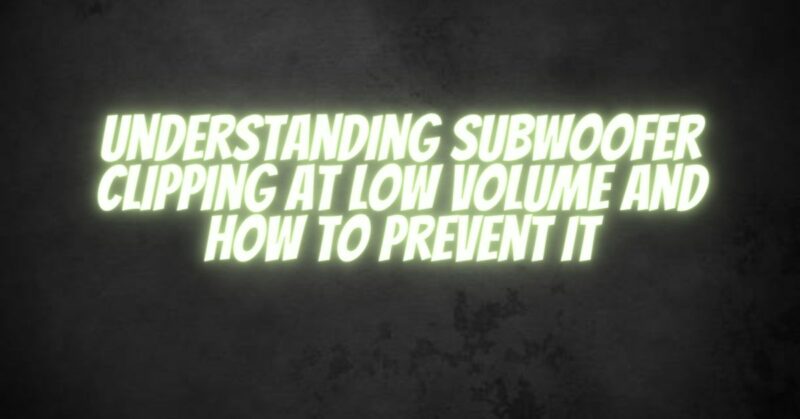Subwoofers are an integral part of a home audio or car audio system, delivering deep bass and enhancing the overall audio experience. However, encountering clipping issues with your subwoofer, even at low volume levels, can be both frustrating and detrimental to sound quality. In this article, we will explore why subwoofers may clip at low volume and provide effective strategies to prevent this problem.
1. Insufficient Power:
One of the primary causes of subwoofer clipping at low volume is insufficient power supply. If the amplifier or receiver powering the subwoofer does not provide enough power, the subwoofer may struggle to reproduce low-frequency signals accurately. This can lead to distortion and clipping, even at low volume levels. Ensure that your amplifier or receiver has ample power output to match the requirements of your subwoofer.
2. Inadequate Gain or Volume Settings:
Improper gain or volume settings can also contribute to subwoofer clipping at low volume. If the gain control on the subwoofer or the volume control on the amplifier is set too high, it can result in excessive amplification of the low-frequency signals, pushing the subwoofer beyond its capabilities and causing clipping. Adjust the gain and volume settings to an appropriate level that allows the subwoofer to operate within its optimal range without distortion.
3. Improper Subwoofer Placement:
The placement of your subwoofer within the listening environment can impact its performance. Placing the subwoofer too close to a wall or corner can create excessive bass reinforcement and cause the subwoofer to overload and clip, even at low volumes. Experiment with different subwoofer placements to find the optimal position that provides balanced bass response without overwhelming the subwoofer.
4. Subwoofer and Speaker Integration:
Mismatched integration between the subwoofer and other speakers in your audio system can also contribute to clipping issues. If the crossover frequency is set too high or low, there may be an overlap or a gap between the frequencies handled by the subwoofer and other speakers, leading to distortion and clipping. Ensure that the crossover settings are properly adjusted to allow a smooth transition between the subwoofer and the main speakers, avoiding frequency conflicts.
5. Room Acoustics and EQ:
Room acoustics play a significant role in audio performance. Excessive room reflections, standing waves, or resonant frequencies can cause uneven bass response, leading to subwoofer clipping. Utilize room treatments like acoustic panels or bass traps to improve the overall acoustics. Additionally, consider using an equalizer (EQ) to fine-tune the subwoofer’s frequency response and alleviate any peaks or dips that may contribute to clipping.
Conclusion:
Experiencing subwoofer clipping at low volume levels can detract from the overall audio experience, but understanding the potential causes can help you address and prevent this issue. Ensure that your subwoofer receives sufficient power, adjust gain and volume settings appropriately, optimize subwoofer placement, integrate the subwoofer effectively with other speakers, and consider room acoustics and EQ adjustments. By implementing these strategies, you can eliminate subwoofer clipping, maintain clean and distortion-free bass reproduction, and enjoy a more immersive audio experience at any volume level.


